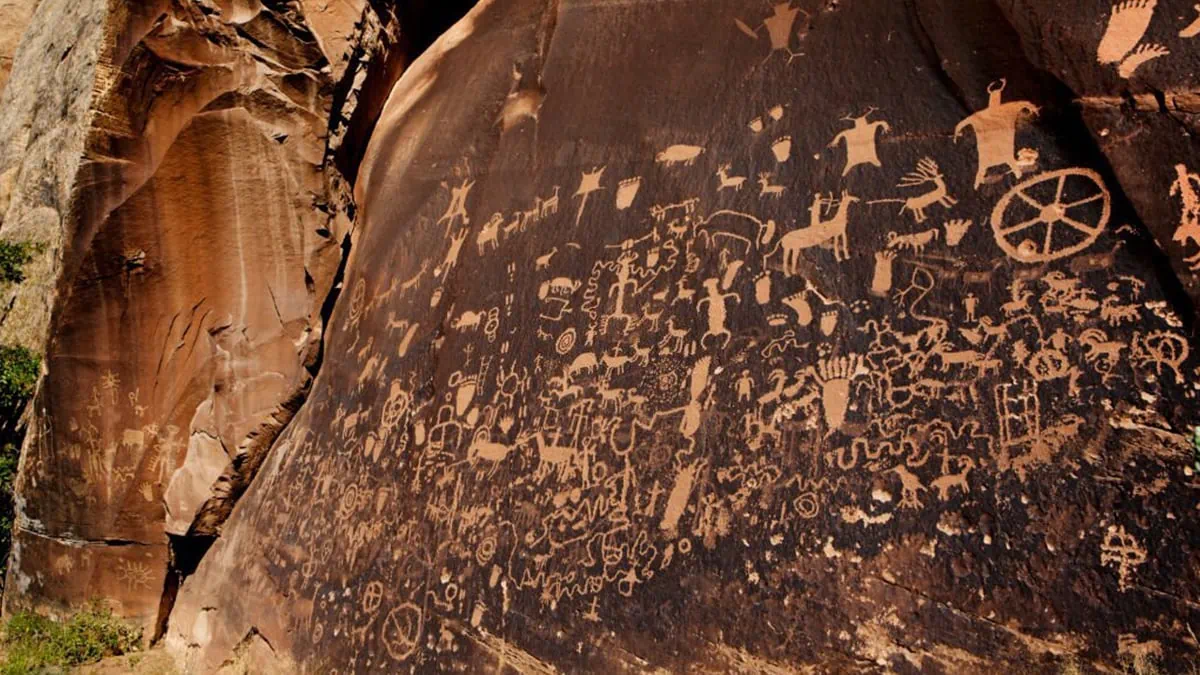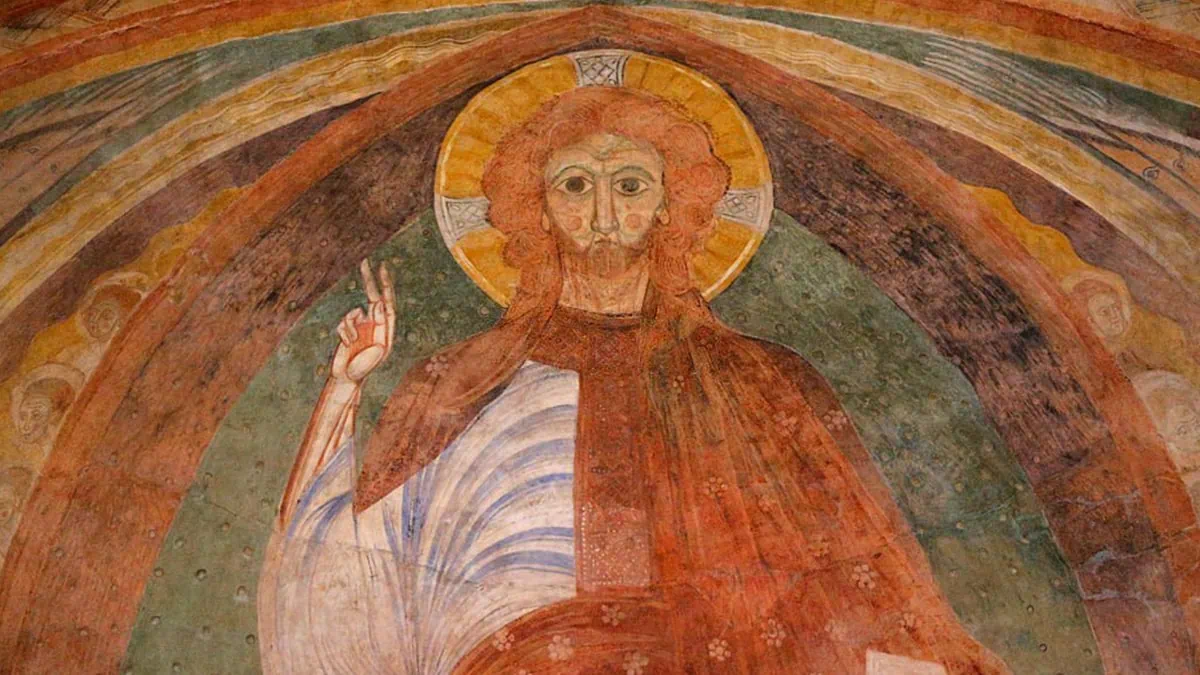If you are an artist or have a keen interest in art, then you must know the answer, which I’m about to ask you.
How much do you know about the history of art?
Do you think that we can really trace back to the first painting that was ever made?
Have you ever wondered who was the first artist and how these ancient paintings came to be?
If these questions in your head left you wondering how the concept of paintings even originated, then you are at the right place.
I have curated a brief history of paintings in chronological order that will answer all the questions above!
Let’s jump straight into it without further ado!
Table of contents
When Was Painting Invented?

If you think about when painting was invented, there is a lot to trace back to.
The period in which painting was first discovered is recognized as prehistoric times.
Yes, we are talking about the time of cavemen and the Stone Age!
This is when nomadic people would make symbols on the rocky walls of caves and mountains.
Do you know why drawing was so important early on in history?
Remember, when looking into the history of paintings, artistic carvings on walls were primarily used as a form of communication.
The origin of painting could have been for aesthetic reasons and documentation too, but it was definitely recognized as a language!
For that reason, finding these paintings can also be seen as a conversation between different eras.
These paintings revealed a lot about painting evolution to the archeologists that studied them.
The earliest signs of paintings were found in the Spanish Caves of La Pasiega, Maltravieso and Ardales, which date to more than 64,000 years ago.
Who made the first painting?

Paintings of ancient times are believed to have been made by primitive people, mostly cave dwellers or Neanderthals in the prehistoric era.
These people would sculpt and paint on the walls, making symbols.
These symbols acted as language in prehistoric times.
So, art came to their rescue to communicate.
However, some researchers believe that Neanderthals predated most of the earliest paintings that were found.
This creates a dilemma in understanding when art was invented exactly!
It is under speculation if it was the Homo- sapiens who actually painted those historical paintings.
Therefore, the questions “Who invented painting?” or “Who was the first artist?” are considered very vague, as we can never narrow them down to a singular person.
However, it is considered that the earliest cave paintings that we can find are from the African subcontinent.
Even though we don’t know who invented art from the history of paintings, we definitely know which part of the world they were first found in.
Imagine that, from drawing on cave walls, the human race grew to produce a plethora of famous paintings in the art community!
How Did Early Humans Begin Painting?

When we look at the history of paintings, it’s believed that our early African ancestors began painting to communicate among themselves and leave a sign for future generations.
Due to these enhancements in humans, it is said that this ability was the greatest innovation among humans, not tools and weapons.
The first humans would blast charcoal dust onto their own hands that were placed on the cave walls using tubes made out of wood.
This created a revelation among the early humans and ignited the cognitive abilities of painting among them.
Due to this, they began to paint even more complicated variations of animals and human activities.
Among these paintings, the most common was the painting of huge animals like mammoths and bison, or activities like farming and hunting of these animals.
Paintings in the Middle Ages

Following the birth and evolution of painting in the ancient age came the medieval age, where paintings as art started to take on a more distinct shape.
This is where the shift happened in the history of paintings.
It changed from paintings being a language to paintings being an aesthetic practice.
Well, not entirely, because many famous medieval artworks were used to convey religious stories.
It witnessed the uprisings of the Jewish, Islamic, and Christian religions among humans.
This gave rise to medieval paintings that were mostly religious in nature and appeased the various gods that the artists would follow.
There was an abundance of paintings of Jesus Christ, realistic genres, and still life that were starting to find a place in every household.
But apart from the religious paintings, there was an explosion of famous landscape paintings that beautifully depicted the reality of the vast and serene landscapes all across the world.
Fan Kuan in the east and Jacob Van Ruisdael in the west started to make a name for their landscape with exceptional beauty and detail.
This started to attract more and more people to paintings, either to paint them or to mesmerize viewers all over the world.
Now that the world was ruled by kings and queens, the demand for paintings has started to increase.
They wanted paintings to increase the beauty of their palaces.
Conquerors wanted the paintings to depict their hard-fought battles, and governors were looking to depict their well-governed cities.
The medieval paintings created a new fashion among people to commission art according to their own tastes, which created a new boom in the painting industry.
Paintings From the Renaissance

Painting was at its most popular stage ever in history as the globe entered the Renaissance era.
Apart from its use as something to ponder over, paintings were now also being used as currency in the world, and this brought a new wave in the history of paintings!
Many Renaissance painters like Michaelangelo, Leonardo da Vinci, and Rafael were household names as their paintings had achieved celebrity status.
Their words now held great weight in every political situation, as their paintings held the power to sway the minds of people.
Their paintings had a deeper meaning, which started to attract viewers from all over the world.
This was considered to be the best time in the history of painting as an art.
Other famous paintings, like the Mona Lisa, Creation Of Adam, and The Last Supper, were credited to the Renaissance era.
This created a sense of great accomplishment among these painters and received a great deal of recognition.
Evolution of Painting into Rococo and Baroque

As the world progressed into the next stages of human evolution, so did art, and so did the history of paintings.
It was used as a medium to communicate messages to different communities.
The evolution of painting also became something that represented different people and art movements.
With this rise in popularity came the rise of various movements, like the Baroque cultural movement and the Rococo movement.
In the beginning, the paintings of the Baroque period were stylized with great drama, deep color, and intense light and dark shadows.
For the first time in the history of paintings, they were meant to evoke emotion in the viewer.
This was, in fact, in stark contrast to the peaceful and serene paintings from the Renaissance.
From the focus on community, you can see how the history of paintings is starting to focus on the individual now.
Among some of the greatest Baroque period artists, the most famous were Rembrandt, Carravaggio, Reubens, and Poussin.
In Italy, especially the Baroque style, which was epitomized by religion and mythology, often gets displayed on the roofs of churches.
Whereas in the Dutch art community, easel paintings of everyday subjects became more popular.
20th-Century And Modern Paintings

The 19th century rolled up in the art world, and the hype around painting as a household item started to die as media and technology started to take over the world.
But it wasn’t completely dead yet and still had a pretty strong hold on the political and social community in the Western world.
In fact, it is in this era that art geniuses like Pablo Picasso, Gustav Klimt, and Vincent van Gogh grace us with the most phenomenal art in the history of paintings.
The 20th century itself was filled with turmoil, wars, and social unrest all around.
Paintings by Frida Kahlo, Jackson Pollock and Salvador Dalí created a new wave and definition of modern art!
Amidst all of this, for the first time in the history of paintings, multiple movements were taking place, and painters were able to choose their own genre of painting.
One of the biggest art movements that revolutionized the art of painting was called “abstraction of art.”
Famous abstract paintings from all over the world began to resonate with people like never before.
In this movement, painters were able to move away from the long-standing tradition of portraying realism.
The painting had found a way to deliver messages which were deeper than what they were able to before.
This same movement took place in various ways under various different names in multiple countries.
The movement’s evolution led to what we know today as modern art and paintings.
Epilogue
Here it comes to an end, hope you had fun reading about the history of painting and how the concept of art really evolved and changed perspectives over time.
Also, not to forget the fact that people from all over the world have contributed to the art being inclusive and easy to adapt.
There is a lot of evidence that states that historical paintings have created a buzz in the modern art world.
Well, think about it what if I told you that you could actually get your hands on one of the historical paintings?
You’d be surprised, right?
To be more specific, you can not actually get the original painting but can get an exact replica of it.
All you have to do is:
Frequently Asked Questions
The oldest painting was discovered in the caves of Maros, Indonesia, some 40,000 years ago.
The oldest known paintings of Western art are housed in France’s Grotte Chauvet.
Ancient people used to make fluid-like substances from their saliva and animal fat to create textures and hues to make cave paintings. The techniques used were spraying, either by blowing into hollow bones, or using hands and fingers.
Leonardo da Vinci is known to be the father of Renaissance because of his spectacular and unique set of paintings and art style!
Pablo Picasso is called the father of cubism for introducing such a unique art style in modern art that has never been witnessed before in the history of paintings.
The old and ancient paintings are called as ‘historical paintings’.






I really appreciate the blog. Thank you for a good job.